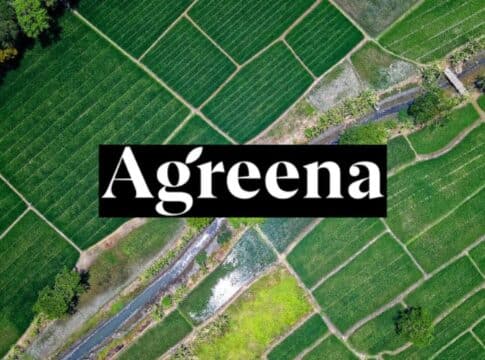The Core Carbon Principles Published
The Integrity Council for the Voluntary Carbon Market has released their long-awaited Core Carbon Principles (CCPs), which could lead toward additional labels that will help buyers identify high-quality carbon credits. They are set to release their
CCPs will set a global standard for high-integrity carbon credits based on clear and verifiable data. Credits that meet the CCP criteria will be labeled and recognized as high-quality.
The CCP label will identify carbon credits that meet the high environmental, social, and climate integrity criteria set out in the CCPs. The Integrity Council will also publish an Assessment Procedure and Framework for carbon-crediting programs, as well as Attributes for credit types, to help buyers identify those that match their preferences.
The announcement of CCP-approved programs and credit types will begin in Q3, with additional programs and types announced afterward.
Starting in May, the Integrity Council will assess carbon-crediting programs and prioritize approval for credit types that are more likely to meet their criteria. The council will engage experts to conduct an initial review and convene a working group in March.
They plan to continually improve the Core Carbon Principles and will launch the first revision process in 2025, informed by multi-stakeholder work programs announced in the future.
To ensure CCP labels become available in the market quickly, the council will prioritize credit types based on complexity and market share. They aim to continually improve the voluntary carbon market and encourage greater ambition. The council will provide further information on the assessment process when it releases its final documents in March.
The Integrity Council has been collaborating with stakeholders in the voluntary carbon market, including Indigenous Peoples and carbon-crediting programs, to create a shared understanding of what makes high-integrity carbon credits. They received over 5,000 comments and 350 submissions during a two-month consultation in 2021. They are now finalizing the CCPs, Assessment Procedure, and Assessment Framework.
The voluntary carbon market is currently valued at around $2 billion and traded almost half a billion tonnes of carbon credits in 2021. By establishing a global benchmark for high-quality carbon credits, the CCPs will help to increase the growth of the market. This will mobilize more money and direct it towards the best solutions for climate change.
What are the Core Carbon Principles?
The CCPs and Assessment Framework set out specific requirements that apply to carbon credit programs and different types of carbon credits.
Carbon credits can only be labeled as CCP-approved if they are issued by a program that meets the requirements outlined in the CCPs and Assessment Framework and their methodologies for verifying carbon credits meet the same requirements.
The Integrity Council will use the same level of rigor and strictness when applying the Assessment Framework to identify which carbon-crediting programs and credit types are eligible for CCP approval.
This means that programs and carbon credits will be evaluated thoroughly to ensure they meet the high-integrity criteria specified in the CCPs and Assessment Framework.
Carbon Credit Programs
The Core Carbon Principles and Assessment Framework are applicable to specific carbon-crediting programs. Some organizations have multiple programs (Verra, REDD+ etc.), tracks (Clean Development Mechanism etc.), and unit types (CORC, VER etc), making it necessary to clarify which program, track, and unit type the Integrity Council is assessing.
The Integrity Council will evaluate not only whether carbon-crediting programs meet the requirements, but also how they get implemented and enforced in practice when assessing CCP eligibility. This ensures that the programs meet high-integrity criteria and are effectively reducing carbon emissions.
Carbon Credit types
The CCP framework will define the types of carbon credits.
Carbon-crediting issuing program
Type of mitigation activity
Methodology used
Scale and country of the activity.
Each unique combination of these factors creates a distinct type of carbon credit, which must meet the standards set out by the CCPs and Assessment Frameworks to be legitimate.
The 10 Core Carbon Principles: A Guide to Understanding Carbon Credits
The Core Carbon Principles are a set of guidelines that ensure the integrity and quality of carbon credits. Here are the principles you need to know.
They are broken down into 3 Sections: Governance, Emission Impact, and Sustainable Development.
A: Governance:
1. Effective Governance:
Carbon-crediting programs should have effective program governance to ensure transparency, accountability, and overall quality of carbon credits.
Governance is important in ensuring the quality of carbon credits and maintaining trust in the voluntary carbon market. It improves transparency, accountability, and participation while increasing public engagement.
Key documents should be publicly available to enable transparency and feedback for continuous improvement. The carbon-crediting program must keep up with external market environments and technologies, regularly reviewing standards and processes.
The program must also have a grievance resolution mechanism for addressing grievances related to mitigation activities in a fair, effective, and transparent manner. Inclusive and informed decision-making requires public engagement in all key processes.
There must not be conflicts of interest in decision-making, and appropriate processes must be in place for the issuance of carbon credits. The program should also have a corporate governance framework for reporting and disclosure, risk management, and policies and controls such as anti-bribery to support the organization’s long-term resilience.
The Assessment Framework recognizes that regulatory requirements may satisfy governance requirements for non-profit carbon-crediting programs, but efforts are needed to build trust and scale up carbon finance.
2. Tracking:
Carbon-crediting programs should operate or use a registry to uniquely identify, record, and track mitigation activities and carbon credits issued.
A carbon registry is a technology system used by carbon-crediting programs to track and record carbon credit transactions. It plays a vital role in maintaining the integrity of carbon credits and increasing transaction transparency.
Registries implement accounting rules to prevent double counting, and must identify each carbon credit and associated attributes. Carbon-crediting programs must have strong know-your-customer processes to ensure only authorized representatives create registry accounts.
3. Transparency:
Carbon-crediting programs should provide transparent and comprehensive information on all credited mitigation activities. Scrutiny of mitigation activities should be accessible to non-specialized audiences.
Transparency is crucial for ensuring the credibility of carbon credits. Mitigation activity documentation must be publicly available, providing stakeholders access to decisions and analyses supporting emission reduction claims.
Carbon-crediting programs should make sure that this information is readily accessible and available in an electronic format, subject to confidentiality constraints. This information should allow users to evaluate mitigation activity information, including additionality assessment, quantification of emissions reductions or removals, and social and environmental impacts.
4. Robust Independent Third-Party Validation and Verification:
Carbon-crediting programs should have program-level requirements for robust independent third-party validation and verification of mitigation activities.
Third-party auditing is crucial to maintain consistency and integrity in the voluntary carbon market. Independent third-party auditors play a vital role in ensuring that the design of mitigation activities meets the program requirements and crediting the emission reductions or removals are in line with program methodologies.
To achieve this, carbon-crediting programs must have requirements for third-party auditing. They must also have accredited verification and validation bodies through reputable organizations.
The VVB’s impartiality is also important, and programs must have procedures to ensure each mitigation activity undergoes a validation and verification audit.
Oversight procedures include assessing VVBs, reviewing reports, systematic monitoring, and sanctioning non-conformity. A rigorous accreditation process complemented by measures to limit potential conflicts of interest helps ensure impartiality.
B: Emissions Impact
5. Additionality:
Carbon credits should incentivize greenhouse gas emission reductions or removals that would not have happened without the carbon credit revenues.
Project Level
Additionality is crucial to the quality and environmental integrity of carbon credits. It ensures that credits are not given to activities that would have happened anyway. A carbon credit must come from an activity that reduces or removes emissions that wouldn’t have occurred without incentives from the carbon price.
If a credit doesn’t correspond to real emissions reductions, it could increase global emissions when used to compensate for emissions elsewhere. Voluntary carbon crediting shouldn’t take place if regulations already ensure emissions reductions.
There are different ways to assess additionality, such as financial additionality, barrier analysis, performance-based tests, and common practice analysis. Each approach has its complexities and concerns. Financial additionality ensures that carbon credits make an activity economically viable, but it can be gameable.
Barrier analysis looks at other barriers that prevent activity from happening, but it relies on qualitative judgments. Common practice analysis examines whether an activity is common within a jurisdiction, but there are questions about the appropriate control group.
It’s important to note that regulatory additionality is crucial, meaning that an already regulated activity should not receive carbon credits. The purpose of the additionality assessment under the draft Assessment Framework is to evaluate the carbon-crediting program’s approach to additionality rigorously. All the approaches mentioned are applicable to determine whether there is real additionality.
The Assessment Framework evaluates the chance of additionality for a carbon credit in the first step. The evaluation is based on the financial viability, barriers to implementation, and market penetration rates for the specific mitigation activity. This step does not examine methodologies or program rules.
Step 1, the Framework for Core Carbon Principles determines the overall likelihood of additionality.
Very high – Leads to a fast-tracked process as the mitigation activity is deemed to meet the additionality criteria if it is fully dependent on carbon credit revenues. The carbon crediting program must then assess whether the mitigation activity is a legally required activity and whether it can reasonably expect to generate revenues.
If a mitigation activity is solely made possible by carbon credits, it is considered highly likely to be additional, but it must also meet other criteria to be eligible for carbon credits.
Medium –Additional evaluation of the carbon credit program is required.
Insufficient – If a mitigation activity is too profitable in the market, it won’t be eligible for carbon credits even if the carbon crediting program has provisions for it.
Step 2, The Assessment Framework evaluates how well the carbon-crediting program assesses additionality, based on the results of the first step. This includes reviewing the program’s documents and methodologies used for quantification.
The Assessment Framework provides specific criteria for assessing the approaches used by carbon-crediting programs such as:
Benchmark analysis – involves comparing the economic performance of a mitigation activity with a financial benchmark, such as the hurdle rate for the internal rate of return (IRR).
Investment comparison analysis – comparing the economic returns of a proposed mitigation activity to other investment options that may be available.
Barrier Analysis – examining any obstacles that may prevent the mitigation activity from being carried out successfully.
Market Penetration Assessments – How much a particular type of mitigation activity or technology is already being used in the relevant geographical location.
6. Permanence:
Carbon credits should ensure permanent greenhouse gas emission reductions or removals. Any risk of reversal should be fully compensated.
Preservation of carbon reservoirs may reverse due to human or natural causes. Temporary storage can’t substitute for permanent reduction. Reversible mitigation is still important in global warming reduction efforts.
High-integrity approaches include crediting on a temporary basis or monitoring and compensating. Practical, technical, and political considerations for permanence.
Compensation mechanisms can’t be maintained perpetually. Two ways to occur within carbon markets: establish rental payments or internalize carrying costs. Weak guarantees may lead to inefficient mitigation investment allocation.
Different project activities have varying levels of non-permanence risk. Solar panels can be considered permanent, while forestry activities have high non-permanence risks. The framework recognizes different non-permanence risk levels for different mitigation activities.
Activities:
No Reversal Risk – no requirements are imposed.
Low Reversal Risk – mechanisms to address voluntary reversal risks are required.
Material Reversal Risk – stronger mechanisms to address both intentional and unintentional reversal are mandated.
Carbon crediting programs use temporary crediting, buffers, and discounting to address non-reversal risk. There have been attempts to create insurance mechanisms but none exist yet.
The permanence assessment aims to ensure emission reductions are permanent over a long period. Approaches include discounting, buffer pools, and temporary crediting. The approach focuses on three equal criteria for permanent credits in the current market.
Duration – the length of time to monitor and compensate for reversals is important for carbon-crediting programs. Longer commitments provide stronger assurance, but practical issues of institutional and legal stability may limit duration.
Incentives & Mechanisms – The carbon crediting program’s strength of mechanisms and incentives to compensate for reversals is assessed. The risk of reversals can be compensated through the use of buffer pools, discounts, or insurance.
Stability – When there is institutional stability, legal liability, and other provisions are available to compensate for reversal over the long term and contribute to addressing the risk of non-permanence.
The Integrity Council emphasizes the need for a high level of assurance of permanence for credits assumed to be permanently valid.
Temporary crediting is an alternative approach that recognizes the risk of reversal by instituting a validity period for credits and putting the liability for reversal on the potential buyer.
Mechanisms that do not require credit replacement or compensation for reversals are not eligible to earn the Core Carbon Principles label. Jurisdictional REDD+ mitigation activities follow similar approaches and criteria for the duration of the commitment period and the sufficiency of compensation mechanisms.
Carbon-crediting programs should be judged on the application of generic criteria, with differences in context and partnership with the government rather than private sector actors.
7. Robust Quantification of Emission Reductions and Removals:
Carbon credits should be robustly quantified based on conservative approaches, completeness, and sound scientific methods.
It is important to reliably quantify emissions reductions or removals from mitigation activities. Conservative estimates are necessary to prevent the over-generation of credits and invalid claims.
Quantification protocols are part and parcel of methodologies and provisions, including additionality, permanence, and monitoring and reporting plans. The draft Assessment Framework proposes three key criteria for program and mitigation activity type provisions on quantification of emissions reductions and removals.
The first criterion is a methodology development process, including stakeholder participation, periodic updates, and reviews. The second criterion relates to requirements addressed in quantification protocols.
The third criterion is the review and approval of the quantification protocol by a competent body or authority. These criteria are crucial in ensuring the environmental effectiveness of mitigation activities and the validity of carbon credits generated.
8. No Double Counting:
Carbon credits should be robustly quantified based on conservative approaches, completeness, and sound scientific methods.
Carbon credits should not be double-counted, which covers double issuance, claiming, and use.
Double counting carbon credits is a major concern for the integrity of the voluntary carbon market. Double counting occurs when the same carbon credit is used for different claims. It can also be when the same emission reduction is credited under different programs.
This undermines the legitimacy of the carbon-crediting system and the use of carbon credits. The draft Assessment Framework seeks to avoid various types of double counting, and measures are in place to prevent it.
There is an ongoing debate about whether double claiming should be avoided in the context of voluntary climate commitments. The Paris Agreement and company accounting systems are viewed by some as working in parallel, while others see them as inherently connected. The Integrity Council has not taken a position on this issue and invites views on it and other topics related to alignment with Article 6 of the Paris Agreement.
C: Sustainable Development
9. Sustainable Development Impacts and Safeguards:
Carbon-crediting programs should have clear guidance, tools, and compliance procedures to ensure that mitigation activities conform with established best practices on social and environmental safeguards while delivering net positive sustainable development impacts.
Ensuring social and environmental integrity is crucial in generating carbon credits. Carbon-crediting programs must implement safeguards to avoid or minimize the risk of harm and deliver net positive sustainable development impacts.
Requirements should cover responsibilities for managing environmental, economic, and social risks and impacts, ensuring respect for human rights, including IPLCs, and promoting net positive SDG impacts.
Benefit-sharing is also essential to promote continued support and buy-in for mitigation activities. And then carbon-crediting programs should have equitable and fair benefit-sharing practices in place.
The REDD+ and the World Bank’s frameworks provide guidance for carbon-crediting programs. Mitigation activity documentation must be publicly available for transparency and stakeholder access to decisions and analyses.
Carbon-crediting programs must have KYC processes for account opening, and each mitigation activity must undergo validation and verification audits. The registry system must implement accounting rules to avoid almost all forms of double counting. And carbon credits must follow a clear chain of custody.
To be elligible for Core Carbon Principles label, carbon-crediting programs must also have:
robust governance approaches,
procedures for regular reviews,
public engagement measures, and
conflict-of-interest prevention measures.
10. Contributing Towards Net Zero Transition:
Mitigation activities should avoid locking in levels of emissions, technologies, or carbon-intensive practices that are incompatible with achieving net zero emissions by mid-century.
The Paris Agreement’s long-term goal of achieving net zero emissions has made it imperative to discourage any mitigation activity that would lead to a locked-in increase in long-term emissions, even if it results in short-term emission reductions.
The Assessment Framework proposes standardized attributes for tagging carbon credits to address the risk of lock-in for particular technologies and mitigation activity types. The proposed attributes include “Type of mitigation outcome,” “Host country authorization for the purpose of Article 6 of the Paris Agreement,” “Quantified SDG impacts,” and “Adaptation co-benefits.”
The post The Core Carbon Principles Published appeared first on Carbon Credits.



